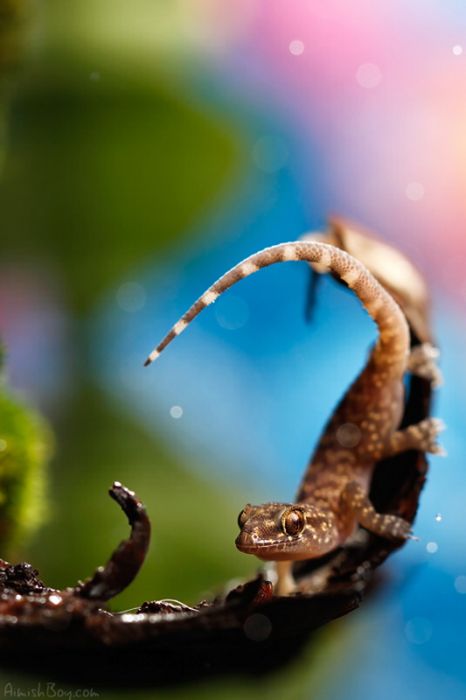|
|
Animal Macro Photography
|
• Reversing a lens of lesser focal length in front of a normally mounted lens using an inexpensive macro coupler, which screws into the filter threads on the front of the two lenses to join them mechanically. This method allows most cameras to maintain the full function of electronic communication with the normally mounted lens for features such as open-aperture metering. Magnification ratio is calculated by dividing the focal length of the normally mounted lens by the focal length of the reversed lens (e.g., when an 18 mm lens is reverse mounted on a 300 mm lens the magnification ratio is 16:1). The use of automatic focus is not advisable if the first lens is not of the internal-focusing type, as the extra weight of the reverse-mounted lens could damage the autofocus mechanism. Working distance is significantly less than the original lens. This amounts to using a lens normally used as a main photographic objective as an auxiliary lens.
• Close up lens filters: a close up filter is the simplest, cheapest way to go to be able to focus closer to your subject. It’s a special filter that screws in to the end of your regular (non-macro) lens. Close up filters have ranging powers allowing you to get in close to varying extents. A number 4 filter allows you to get in closer than a number 2 filter does. A number 2 filter allows you to get in closer than a number 1 filter. So the higher the number, the more power a filter has to getting you closer to your subject while still maintaining focus. You can also screw multiple close up lens filters to get you even closer to your subject. So if you screw a number 4 and a number 2 close up filters, you’ll end up with a number 6 filter that would allow you to move in even closer. There is one thing you need to keep in mind though. In macro photography the closer you go in, the shallower your depth of field is going to be. So you might not want to go in too close, otherwise you wouldn’t be able to capture a sharp well focused photo of your subject.
• Depth of field is extremely small when focusing on close objects; a small aperture (high f-number) is often required to ensure sufficient depth of field. This requires either a slow shutter speed or bright lighting for correct exposure; in all but the brightest natural lighting if a prolonged exposure is not advisable, auxiliary lighting (such as from a flash unit) is required. Uniform lighting can be difficult with subjects very close to the lens; a ring flash mounted on the front of the lens can provide even illumination. Good results can also be obtained by using a flash diffuser, which can be made of inexpensive Styrofoam.
|
|









